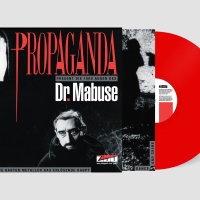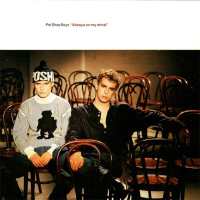 Simple Minds | Sparkle In The Rain – 4
Simple Minds | Sparkle In The Rain – 4
[continued from previous post]
It was immediately apparent when the needle dropped on “Sparkle In The Rain” that Simple Minds were undergoing another metamorphosis. The band had already had three distinct phases of artistry under their belts by this time [“Life In A Day” – new wave, “Real To Real Cacophony” – “Sister Feelings Call” – chilled out art rock, “New Gold Dream” – sensual art funk pop a roll] and as soon as the four-count that announced “Up On The Catwalk” happened, it was manifest that the band were now venturing into rock territory, but they were not about to give up all of their mystery just yet.
 The drums evidenced the touch of Steve Lillywhite first. He had all but put the technique on the map with his treatment of Phil Collins’ drums on “Intruder” from the third Peter Gabriel album in 1980. Here, the drums sounded almost as sharp as gunfire. Mel Gaynor was playing patterns with infinitely more swing than ears accustomed to his predecessor Brian McGee would be used to. Fortunately, the patterns he was playing were compelling in the same front-and-center fashion that Derek Forbes’ bass had been during the band’s last several albums. This mitigated the production style for my ears. The inexorable forward thrust of Mel Gaynor’s drumming here used powerful backbeats counterpointed with strategic, laser acute fills that were immediately gripping.
The drums evidenced the touch of Steve Lillywhite first. He had all but put the technique on the map with his treatment of Phil Collins’ drums on “Intruder” from the third Peter Gabriel album in 1980. Here, the drums sounded almost as sharp as gunfire. Mel Gaynor was playing patterns with infinitely more swing than ears accustomed to his predecessor Brian McGee would be used to. Fortunately, the patterns he was playing were compelling in the same front-and-center fashion that Derek Forbes’ bass had been during the band’s last several albums. This mitigated the production style for my ears. The inexorable forward thrust of Mel Gaynor’s drumming here used powerful backbeats counterpointed with strategic, laser acute fills that were immediately gripping.
The second thing I noticed was that the keyboards were far more conservative in the palette used here. There was immediately a preponderance of the same heavily reverbed piano sound that U2 had used on “New Year’s Day” a year earlier. The next thing I noticed about the keyboards, was that Mike MacNeil was also leaning heavily on Hammond organ patches. MacNeil had never been a Billy Currie type, but here there was a hint of Keith Emerson or Rick Wakeman to the proceedings. His background drones were not to be discounted though. They provided the verses with a dark atmosphere to contrast with the impossibly bright drumming.
Fortunately, Jim Kerr’s lyrics were a dazzling kaleidoscope of dropped names and near abstract free association. I have to admit that being American, I had to look Kim Philby up. His one gaffe here would be his unmistakable Bono-phrasing of the first two exhortations of “angel” following the song’s bridge. I didn’t notice it at the time, since U2 were off of my radar, but with the benefit of hindsight, it’s immediately apparent.
The tight riffing that opened up “Book Of Brilliant Things” was an immediate grabber for my ears. Jim Kerr’s ad libs following the finger snaps in the crisp intro are almost the coolest he’s ever sounded. I loved the way that Derek Forbes doubled the keyboard hook on his bass line here. For all of its rock bluster, this song reflects the traditional compositional values of Simple Minds with the rhythm section dominating, and guitarist Charlie Burchill adding melodic filigree rather than toppling melodies. His use of acoustic guitar here marks the first time I can remember hearing acoustics on a Simple Minds record. This was an impeccable deep cut but I would not have looked askance at an extended 12″ A-side of this song, though it would have made the first four songs on this album all single releases.
“Just my imagination, just my imagination.
You go to my head, you go to my head.
With the flames that go higher and higher,
And higher and higher and higher and higher,
Over and over to me, speeds your love.” – Speed Your Love To Me
Back in 1981, Simple Minds were challenged by Steve Hillage as to why they never wrote a love song, with the abstract “Love Song” being the ironic result. This outing featured their latest efforts after experiencing the big thaw on the previous album. “Speed Your Love To Me” resulted in an ecstatic love song that builds and builds on a circular framework towards a climax that is always suggested, occasionally gets close enough to touch “over the moon,” but never really comes. Kirsty MacColl’s ethereal backing vocals seemed to taunt Kerr ever forward as even [is that Forbes of Gaynor?] the backing vocalist adds an off-meter “higher” into the mix, tumbling it forward in an almost recklessly out of control fashion. For all of it being a stab at a more conventional love song, the track adheres to the classic Simple Minds template of ultimately being a song of movement, hurtling forward. This time towards a goal that continually evades their grasp even as they strove harder onward.
 Finally, the tumultuous storm that had been circling around this album of busy and clattering beats and featuring a singer caught up in paroxysms of psychedelic allusion and desire finally breaks and lets it pour down from the heavens on the album’s first single, “Waterfront.” The metronomic bass line of Forbes announces its arrival like a harbinger of vast forces of nature that cannot be contained. Gaynor’s brutal and basic drums here serve to help any audience hearing this fuse into a single pulsating organism. This song was built for stadium crowds, but would be a commanding presence in any setting.
Finally, the tumultuous storm that had been circling around this album of busy and clattering beats and featuring a singer caught up in paroxysms of psychedelic allusion and desire finally breaks and lets it pour down from the heavens on the album’s first single, “Waterfront.” The metronomic bass line of Forbes announces its arrival like a harbinger of vast forces of nature that cannot be contained. Gaynor’s brutal and basic drums here serve to help any audience hearing this fuse into a single pulsating organism. This song was built for stadium crowds, but would be a commanding presence in any setting.
On the verses, Charlie Burchill’s guitar licks teased along and advanced the song subtly. They were almost the only subtle thing about the track, really. It’s not until the chorus until his chords began arcing like skyrockets punctuated by brilliant bursts of MacNeil’s massed organ chords doubling the bass line and Gaynor’s crashing cymbals. The climax that was denied on the previous track got delivered here with gusto. In a move that reflected the album as a whole, Jim Kerr had begun singing the song in his then common lower register, before rising in pitch and intensity as the song played out; eventually losing all subtlety in his performance.
In that way, practically the entire album is “in the red” at one point or another. Following an album that was content to smoulder, albeit dazzlingy, this movement towards actual fire was cathartic for the group. Never moreso than on this pulsating, widescreen anthem. It traffics gleefully in bludgeoning power that somehow manages to sail aloft even as it steamrolled right over this listener. Thirty years later, it still manages to thrill me. I can’t say that I ever tire of hearing it, and as I have been listening to it numerous times, it’s gotten harder and harder to even let it play through before I wish to start it over again so I can experience the power of that monolithic bassline yet again.
After that climactic moment of impact, it was time for a retreat from the sort of propulsive dynamics that had typified this album on side one thus far. “East At Easter” was the band’s breather before diving into side two. Booming Mel Gaynor drums were nowhere to be heard here. It was built instead on a subtle foundation of Burchill’s guitar rondo overlaid with loose, percussive playing from Gaynor; almost retreating here into the stylistic shoes favored by Mike Ogletree on the previous album. Then, MacNail’s open piano chords joined into the mix and it became apparent that this track was one more excursion into the fabric of Krautrock. The song never resolved its internal tension, not unlike the title track of “New Gold Dream [81, 82, 83, 84].”
The piano chords played a rising progression as the rhythmic component of the song coiled in upon itself. The one component of the song to obtain release was vocalist Kerr, as usual here gaining volume as he abandoned control; his modus operandi for this album. Then, as he reached the ragged edge of this meditation for peace in the midst of the looming Falklands war, the rest of the song’s elements began to drop out of the mix, leaving only the abstract chords of Burchill’s guitar grinding to a halt along with the now spent vocals of Kerr, trailing off into nothingness.
Next: …A quiet night of a white hot day








![Chris Cross: 1952-2024 [part 2]](https://postpunkmonk.files.wordpress.com/2024/04/ultravox-cross.jpg?w=200&h=200&crop=1)



Let me get this out of the way right up front. Concerning the elements of Sparkle In The Rain that can lead one to think of the U2 of War — Producer Steve Lillywhite is the crossroad at which both bands found themselves. But where U2 were traveling in a fast car, Simple Minds got their on jets of air. They may have crossed paths, their may some (really not many) similar elements at work, but Simple Minds already occupied that airspace that U2 were attempting to launch into.
Where NGD ended with King Is White And In The Crowd, with the drums holding on for dear life as the song fades, Sparkle In The Rain opens with those drums leading the charge, having taken the musical reigns on Up On The Catwalk. This is easily one of my all time favorite SM tracks. It has the intensity and forward motion of I Travel, The American and even Changeling. It was instantly my favorite track on the album and still is to this day. MacNeils keyboards are equally strong at the outset of the track, giving more intensity to the Mel Gaynor’s statement of intent drums. The lyrical assault on modern pop culture and politics is one of Kerr’s greatest achievements for these ears.
Up On The Catwalk is assured, emotional and strong.
Book Of Brilliant Things is shrewd gem. It’s rooted in the bands sound on Empires and Dance but with a rock element that wipes away the claustrophobia of that earlier sound and replaces it with a widescreen optimism.
Speed Your Love To Me isn’t just a love song, it’s a yearning love anthem. I still marvel at how tight the band is on this track. Lillywhite, if he did nothing else, really captured the purity and cohesion of Simple Minds live sound in a studio setting. I’m no naive to think that there isn’t splicing of tapes and takes to get that final product mastered, but when I heard this song for the first time live, I was struck by how remarkably similar the album and live versions were. This is a song of pure, ecstatic, emotion, take further than anything they had done to date. Kerr’s vocals are truly magnetic as he whirls out of control toward the song’s conclusion.
Now for Waterfront…I have held from the first time I heard this moving, bass pounding, martial track that this was Simple Minds reinventing a Celtic anthem. Kerr creates an image of modern day Scotland – urban, weathered and hard working, but striving to break it’s boundaries, make its mark. As forceful as Gaynor’s drum are, Kerr stay out front, controlling the song. Burchill’s guitar lines and effects interplay with MacNeil’s synth lines which keep the mythic feel of the Highlands.
East At Easter brings the soaring airship Simple Minds back down toward earth. The complexity of peace and war and peace again is similar to the one-two-three of the waltz beat the song takes off from. But as the music may begin more subtly than the proceeding four tracks on side one, East At Easter builds with each verse and coda before it comes to a rest.
Side one of Sparkle In The Rain shimmers, casting great beams of light out from it’s center. It doesn’t spend a lot of time attempting to convince the listener. Instead it gets right inside them and opens the listener to and excitement of sound that show a confident and accomplished band that’s risen to the top.
LikeLike
Echorich – It’s been a compelling listen for thirty years. Personally, time hasn’t ebbed it for me. It still sends chills down my spine all over the place. The sound here was a fantastic hybrid of where they were coming from and where they were going to, and in this case, the past had enough influence to only take strengths from their future path. And it had those drums! Gaynor had managed to pull the spotlight from Forbes here, and that’s no mean feat. I have to admit that last month, I’ve listened to this album and only heard the drums in much the same way I can listen to the five albums that preceded this currently and only hear Forbes. His playing is incredible! Dang it, you’re wringing concluding statements from me before I’ve written part 19!
LikeLike
Well we both know what’s in store on side 2, and that is some of Simple Minds most singular work…I’m prepared.
LikeLike
I realized after re-reading my comment that I overlapped some commentary on Side 2’s Street Hassle and and it’s Waltz beat while commenting on East At Easter… But when I go back and think about East At Easter, Burchill does play a sort of 3/4 rhythm on the track as well, it’s just not as pronounced as the waltz of Street Hassle…
LikeLike
I’m less gung ho with Side 1. My main problem is that there is too much Kerr and not as much room as on previous albums to let the music stretch out without his interference. Especially irritating are “Book” and “Speed.” Both begin great but lose their focus around the 3:00 mark, with the final 1:20 or so consisting of Kerr improvising over the lyrics. This gets tired pretty quickly on back-to-back songs. “Waterfront” and “Easter” are a bit more focused, but there is still Kerr overload, though “Waterfront” does have that long, majestic opening, and builds tension along the way to great effect. Don’t get me wrong…I like Kerr, but more Burchill and MacNeil is always a good thing. Burchill especially shines on “Easter.” That’s a truly unique and powerful song on a number of levels.
LikeLike
zoo – Kerr does follow an arc on this album of beginning each song calmly any going into the red usually at the 3/4 mark then reining it back in for the song’s end. I wonder how much of this was from him [the escalation of venue size probably helped spur this on] and what part of this gambit might have been Lillywhite driven. Given where he ended up after this album, I’m inclined to think it was self-inflicted, but there’s also every chance it was the direction of Lillywhite and he liked it and ran with it.
LikeLike
I get that the Kerr quotient is raised greatly on SITR, but I think the entire musical maelstrom is as well and the intensity and volume of his vocals are in line with the character of the recordings, especially on side one. Subtlety is not the goal on Sparkle, where heightened emotions and confidence is.
LikeLike
Going back to Echorich’s comments re the UK music press at the time, in terms of tearing bands down etc, I can now see with the benefit of hindsight that I was unfairly ‘down’ on SITR when it was released, partly influenced by the press reaction and the high expectations after NGD. The plus side has been my rediscovery of the album now, something which really whets my appetite for the 2015 deluxe version. The UK press back then was very focussed on ‘selling out’ and as a young listener I was caught up in that to an extent. Now it’s purely about the music and so
reading both Monk and Echorich’s impressions has been extra enjoyable as a result, it almost makes SITR feel like a new album!
LikeLike
In case anyone missed it – Forbes and Macneil played on this cover of Book of Brilliant Things from 2013 by a dj/producer called Loudery! https://www.youtube.com/watch?v=rKfYKGXcpVI
They only play on the vocal-less “Wan Dub” version and not on the two other versions which have Soulful Black Diva (TM). I like but don’t love the Wan Dub; the vocal versions without Forbes/Macneil are pointless and boring. They versions dutifully check every “correct” retro-synth-disco box but end up being an emotionally and musically bankrupt Stars on 45 for the iTunes era.
What I absolutely love is the demo of “Book” to which the covers are very faithful, is presumably from c.82-83, and sounds entirely like something from New Gold Dream. It’s on Youtube along with a few other Sparkle-era demos – which I found out from an interview where Jim openly says they’re there.
BTW you have to dig a bit to find the correct Wan Dub version (uploader is Tirk, a known and respected UK retro-disco label) because the one Youtube places near the top seems to be a fan remix/edit which is not identified as such; you can only tell by the length and the details which show it’s from a dj in Taiwan.
LikeLike
Richard: Yeah, I heard about this when it came out as it got some traction on the late, lamented SoSimpleMinded fan forum [man, I miss that place] and as I recall, I was not moved by the vocal version enough to sample any of the other tracks on the DL single. This was from that era when you had Forbes and MacNeil puttering around with Ex-Simple Minds/Four Good Men, or some such nonsense. None of which I saw the point of.
LikeLike